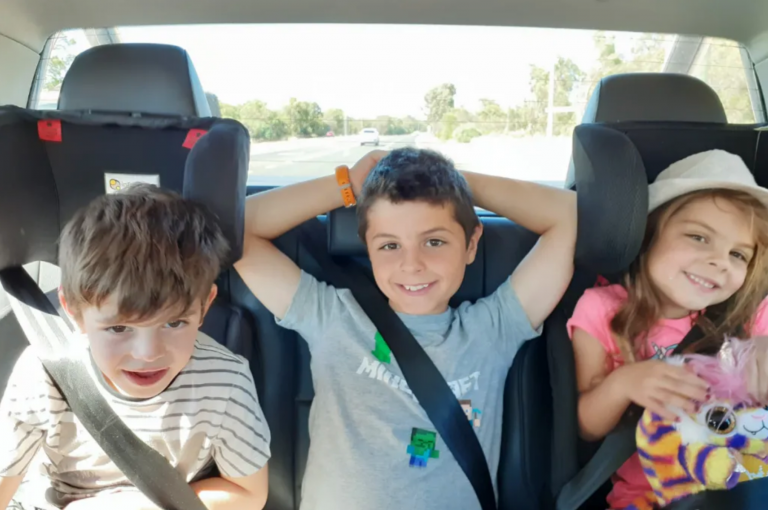Let’s start off by recognizing that leaders are humans too. They’ve experienced the same blurred lines between home and work, the longer hours of work and parenting, the juggle between meeting and home-schooling schedules. Burnt out leaders leading burnt out teams across workplaces is a cry for help that we must acknowledge.
To explore this, Circle In co-founder, Kate Pollard speaks to Sean Hall, mental health expert and Founder of Energx, to discuss the current job and parental burnout and how this can be mitigated.
Workplace (or job) burnout has been included by the World Health Organization in their classification of diseases as “feelings of energy depletion, exhaustion, a mental distancing from your job, and a reduced professional efficacy”. Parental burnout on the other hand stems from exhaustion in your role as a parent, from doing it all in one space over the pandemic to eventually losing a sense of personal effectiveness and an emotionally distancing from your children. It is no secret that these forms of burnout have had a larger impact on women over the last two years.
An Energx study of 1,629 professional Australian women during the pandemic revealed that 65% reported being sleep deprived, 52% report lacking energy for relationships and 58% report feeling stress and overwhelm. If these numbers don’t convince you, maybe this staggering business impact will:
On average, 41 days of productivity are lost to burnout per employee per year.
Sean and Kate rightly point out that in all the training we receive through life and our career, we’ve never been taught to “be well”. Wellbeing has never been more important, however with people already feeling overwhelmed wellbeing programs can, ironically, be seen as more work. Workplaces need to provide practical and light hearted solutions that support employees to make small meaningful changes and not stress them out further.
It’s no secret that this current wave of burnouts is adding fuel to the great resignation. So when the going gets tough, employees may be misled to think a change in employer might do the trick. Unfortunately this doesn’t address the root cause of the problem. Their stress will still linger on and chances are the new workplace won’t change that either.
Here are some key takeaways from the webinar that can help energize your employees and retain talent during this time:
1. The balance between collective solidarity and recognizing the individual
Sean quotes Belgian psychotherapist, Esther Perel, in saying that mass mutual reliance will get us through these rough times. There are no longer two groups of people – those struggling with mental health problems and those that aren’t. We need to drop the stigmatized labels and deal with this in an inclusive manner. People leaders need to acknowledge that staff is struggling at all levels but one solution does not fit all.
“Even though there are commonalities to our experience, everyone’s experience is actually quite unique…people have a collection of root causes that add up to feeling burnout, which will be different to the person next to them, and each will be felt at a different intensity.”
Sean stresses on the importance of treating this as a personalized experience, as well as one that we’re all going through together. By doing both you recognize the individual, reduce feelings of isolation and shame and create a sense of belonging to show that we’re all in this together.
2. Win with parents and you’ll win with everyone else
While most of your workforce is experiencing job burnout, parents and caregivers have been hit with the double whammy of parental and job burnout. This may be the #1 reason they choose to leave jobs but on the flip side #1 reason they will stay is wellbeing and self-motivation. So can you really not afford to invest in your parent and caregiver demographic at a time like this? Kate and Sean discuss nailing the (re)onboarding for parents. Using the principles of human centred and inclusive design, Sean suggests zero-ing in on one group (i.e. parents) and designing solutions that will help them thrive. He challenges that, “if you can re-energize your working parents, everything you design for them will re-energize every other employee.”
|
Bonus win: Your employees become your biggest advocates and you become a more attractive employer for being a truly family friendly workplace. |
Platforms like Circle In and Energx are a great way to zero in on your parents and caregivers and provide them the support they need.
3. Leverage what you already have
If you already have a diversity and inclusion policy, make the wellbeing strategy a symbol of that so it forms a part of the other policies. If you have a mental health strategy for your workforce, make sure it addresses burnout. Sean offers up a simple calculation to serve as a convincing business case to enhance your existing policies:
- How many employees do you have (in total)?
- What is their average salary?
- How much is that over 41 days?
This number is bound to surprise you and will surely make the executive buy-in easier!
Last but not least, encourage your employees and leaders to be kind to themselves and kick the negative self-talk as we come out of the pandemic fog and recalibrate for the future.
For more insights from Sean Hall, watch the full webinar.
If you’d like to learn more about how you can support your employees, click here to talk to us today.


